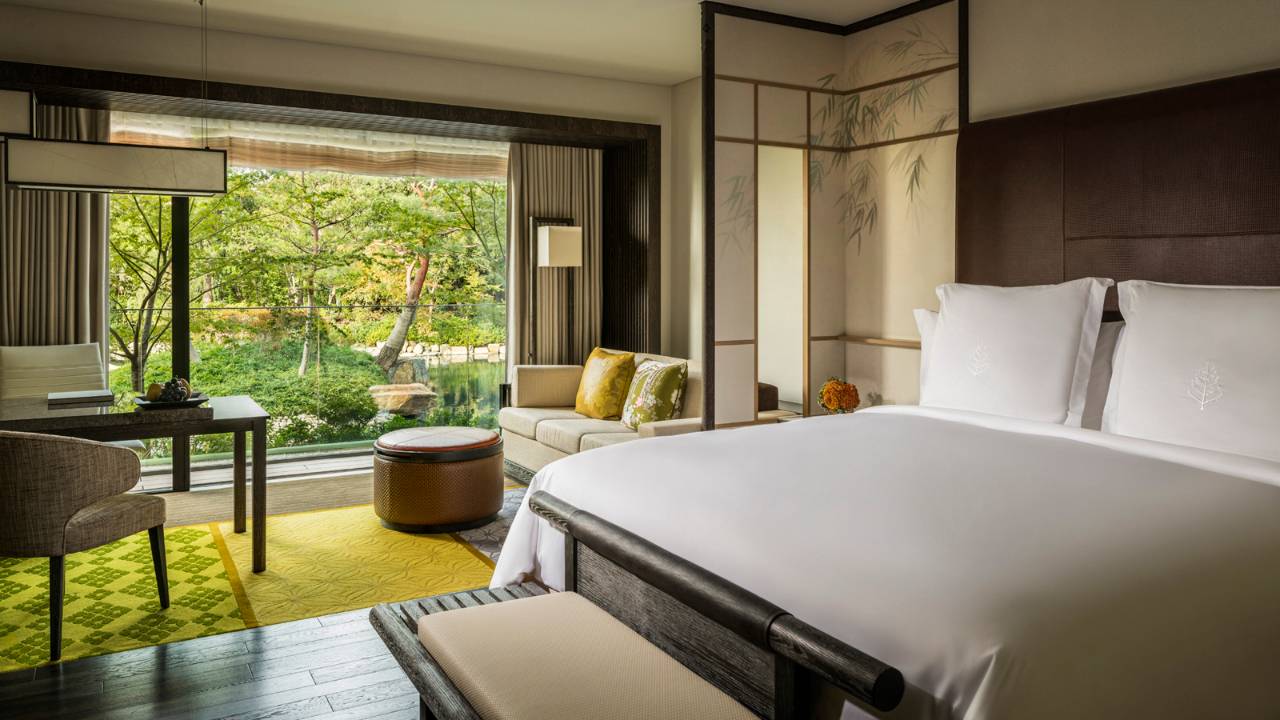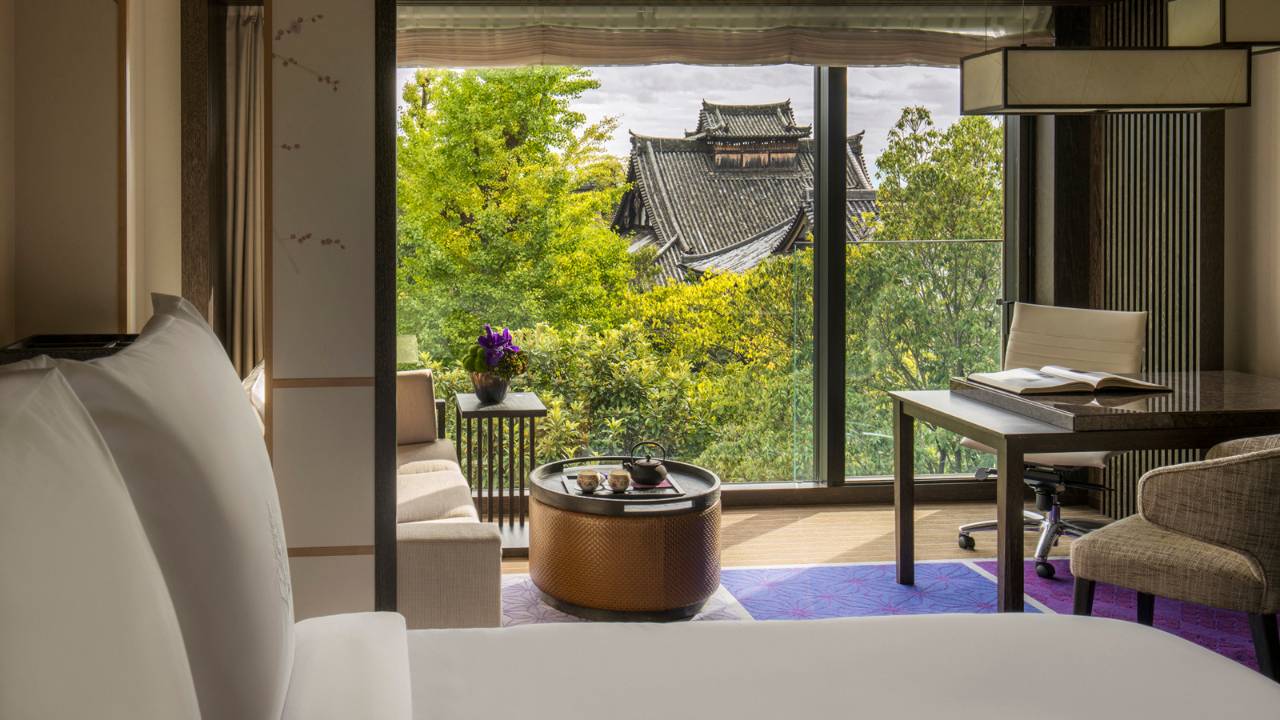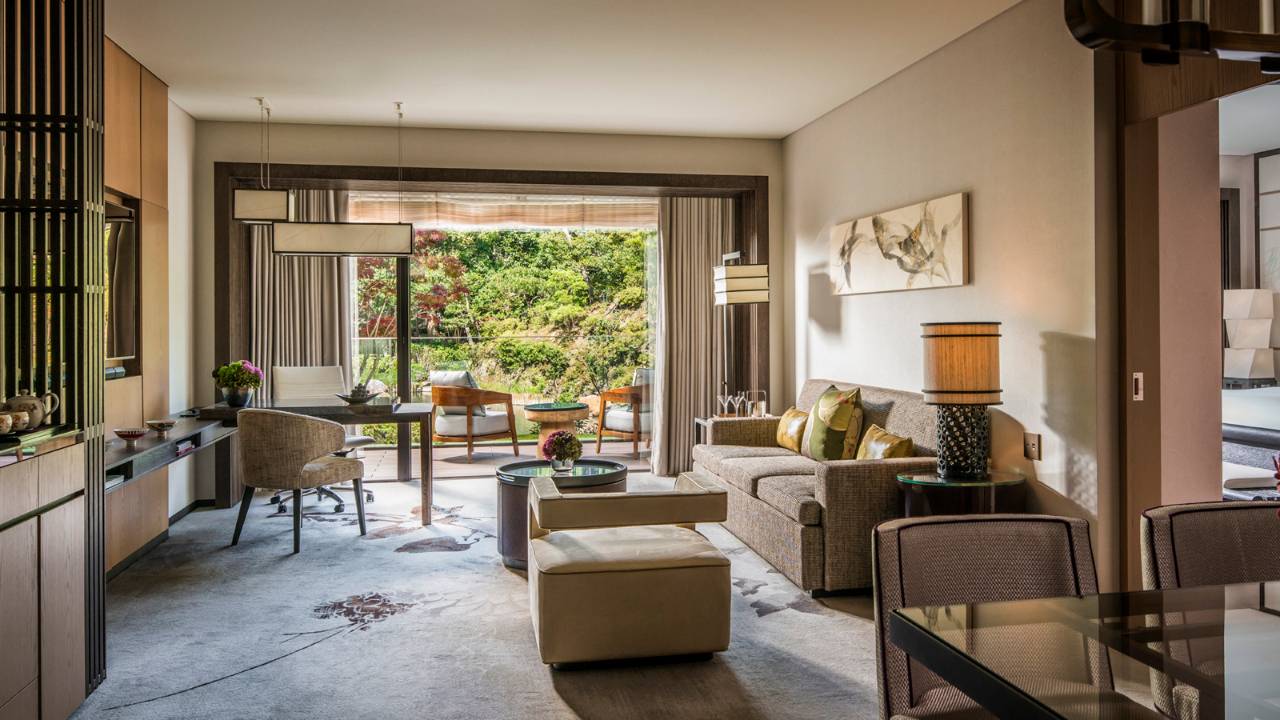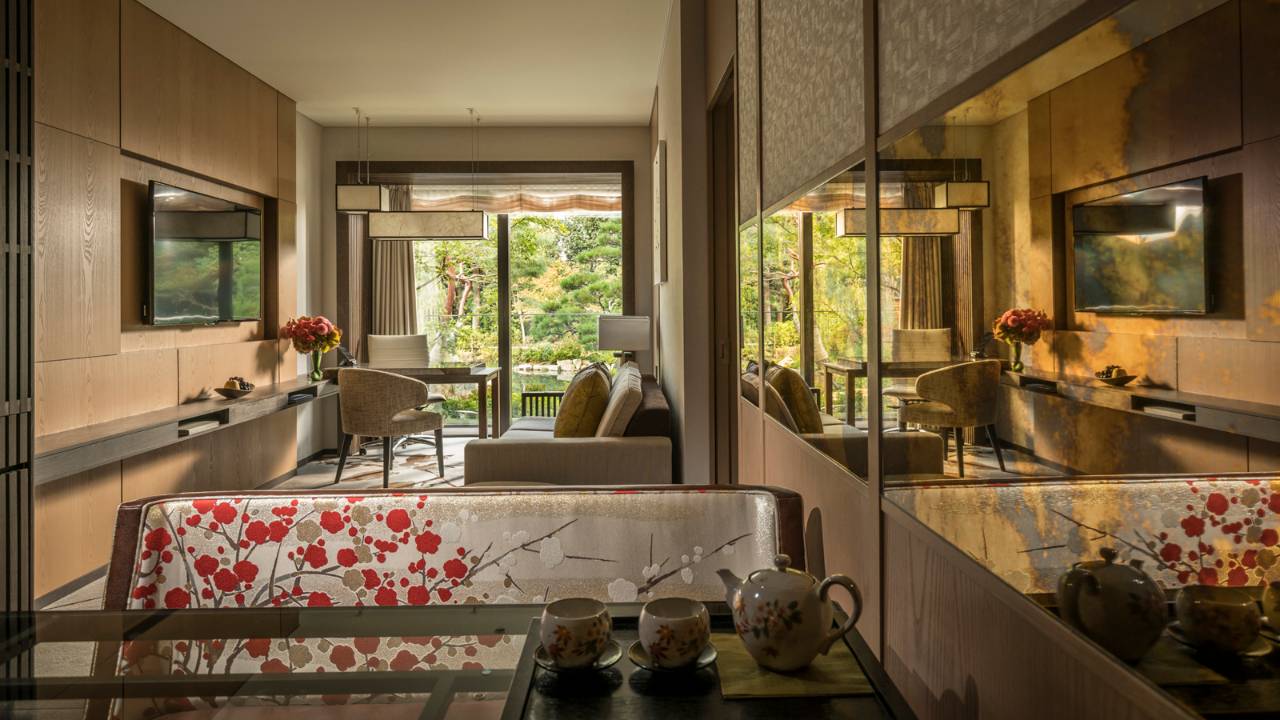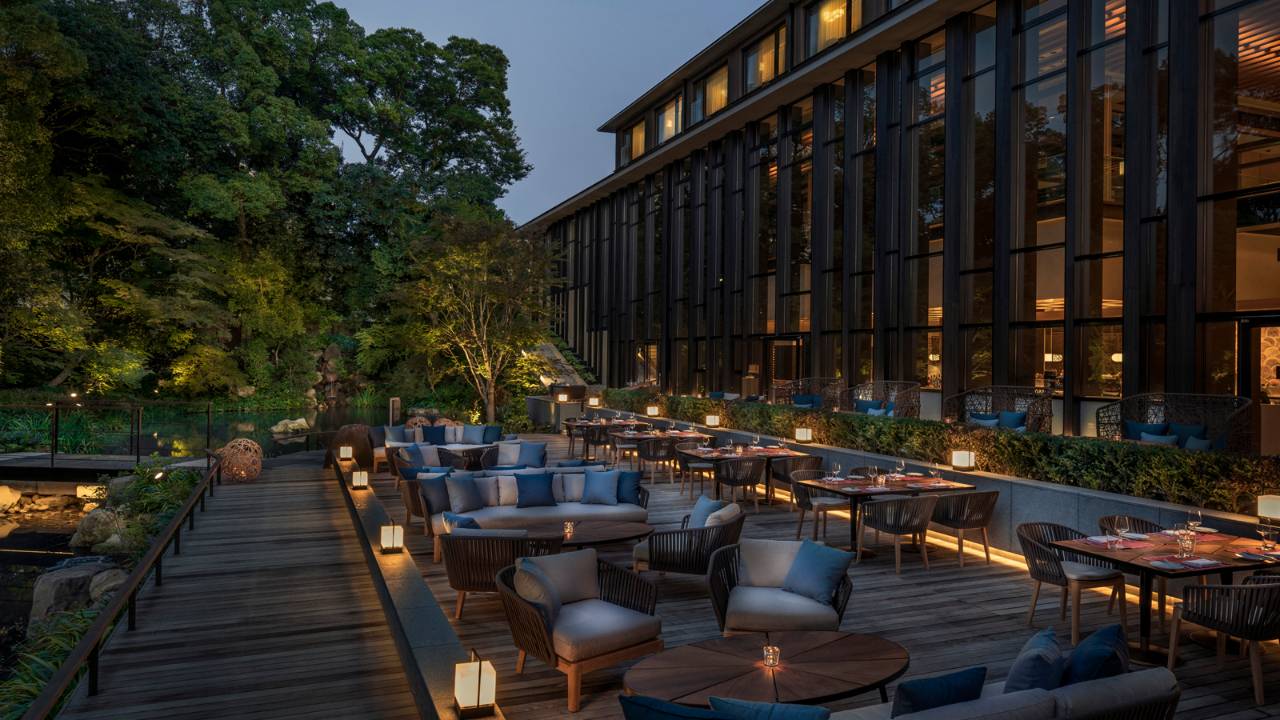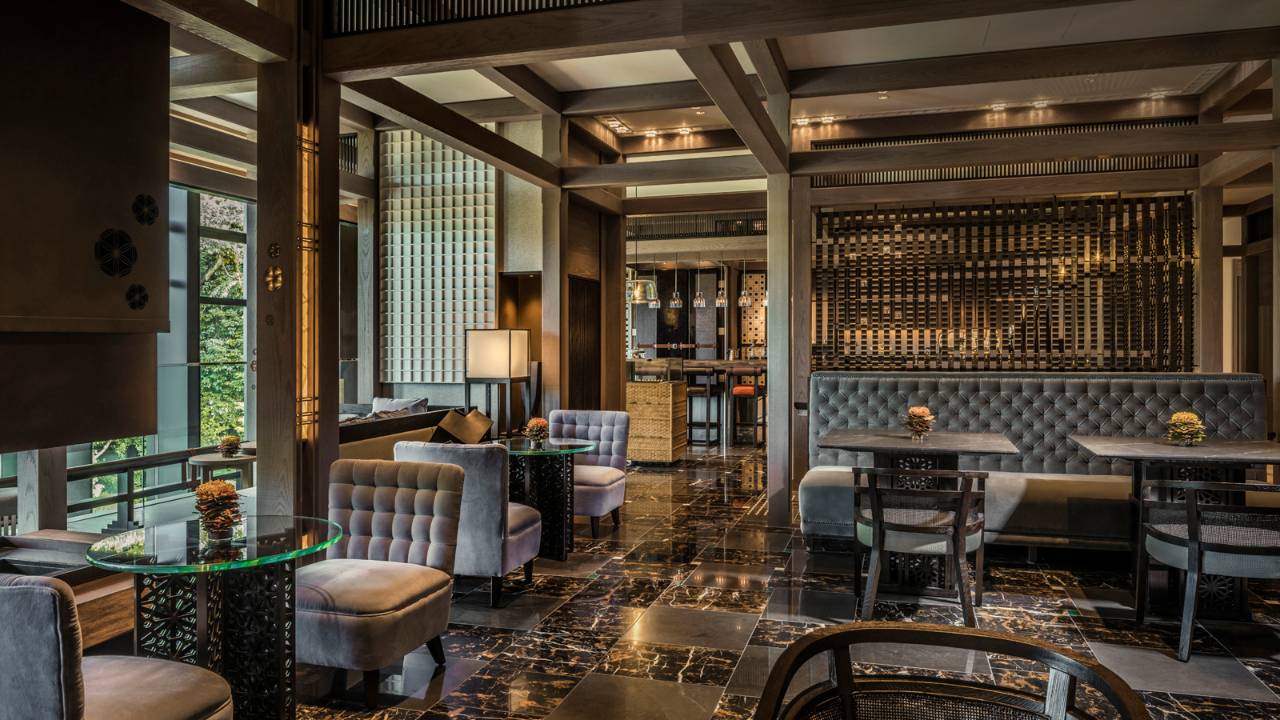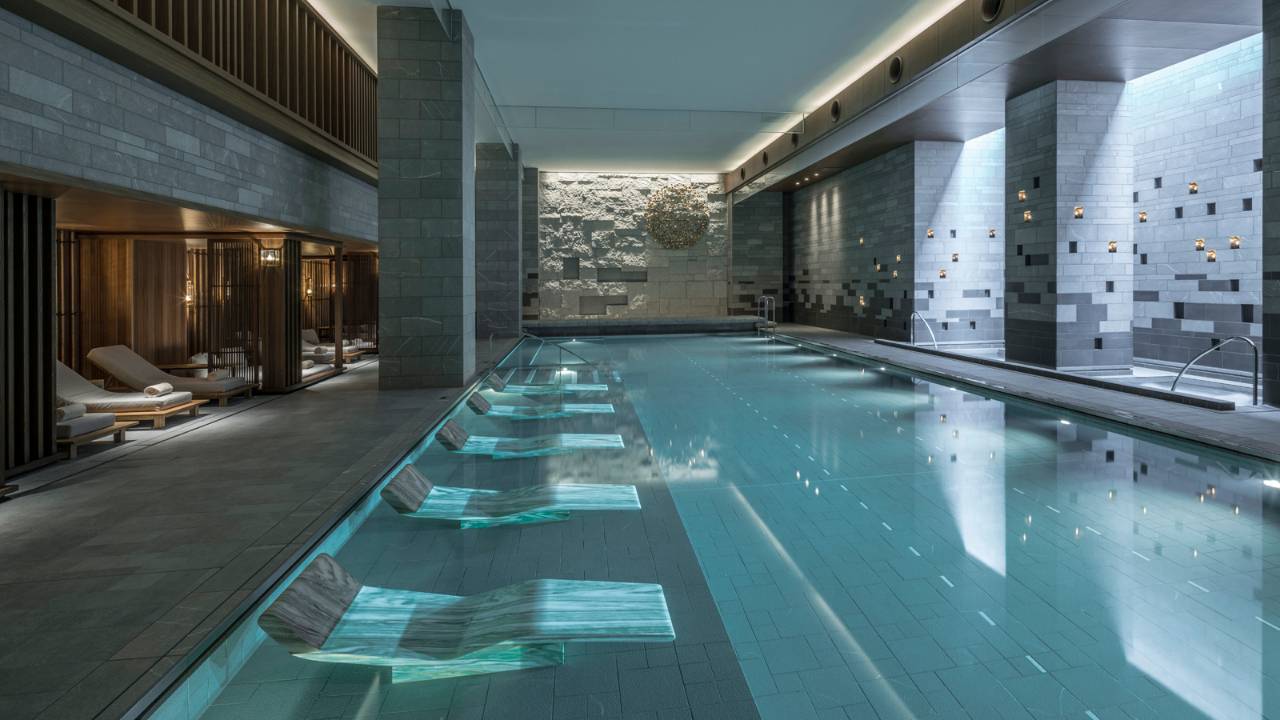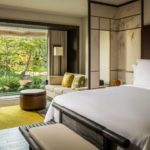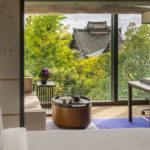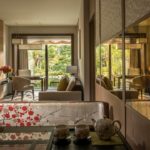Four Seasons Kyoto
Category: Luxury hotel Tags: four seasons, kyoto, luxury Place: Kyoto
Opened in 2016 the Four Seasons Kyoto is situated in the scenic temple district of Eastern Kyoto. Centered around an 800-year old ikeniwa (pond garden), the hotel offers guests a tranquil atmosphere in which to relax. The elegant lobby is a calm, inviting world of creamy marble and cypress wood, dotted with shoji paper lanterns and seasonal floral displays.
The 123 spacious guestrooms feature dark hardwood floors, hand-painted panels, fusama screen doors with pops of pale blue and imperial purple. They’re modern yet echoing traditional Japanese interior design. The large bathrooms come with huge soaking tubs and monsoon showers which can be converted into a single space and infused with the citrusy scent of yuzu fruit. There are a number of signature suites with balconies and beautiful views of the gardens.
The hotel entrance is located on the building’s 3rd floor but guest rooms are located from the 1st floor upwards. The basement is home to a spa, beauty salon, and ofuro (a typically deep, hot-water filled wooden/ stone Japanese-style bath). Often clients can feel unsure about choosing an international chain in Japan, wanting instead to find something “more Japanese,” yet the Four Seasons Kyoto is unique, and designed to reflect the historical city just outside its doors.
The Four Seasons Kyoto exudes prestige, beauty, elegance and magic. Upon entering the hotel, I was greeted with a wonderful display of sunflowers and quickly learnt that European florist Nicolai Bergman was responsible for all of the hotel’s floral masterpieces. I have seen and admired his work at exhibitions elsewhere in Japan (where his work is very highly praised), and indeed Mr Bergman has 11 shops in Japan, one of which is in the Four Seasons Kyoto itself. His beautifully lavish displays in the Four Seasons Kyoto really help bring the outside in. Stealing my eyes away from the lobby I quickly noticed, thanks to the Four Seasons enormous 9 meter tall floor-ceiling windows, that the garden is equally as enchanting. Complete with its own Tea House which also serves champagne and sake in addition to offering a traditional tea ceremony with a Tea Master, the garden is framed by the windows (whose frames are inspired by bamboo) to look like a beautiful picture. The garden boasts a beautiful lake, and the bridge which crosses over is constructed from stone dating back to the Heian era. What struck me most about this hotel was how much it encompasses the sense of Japanese design, elegance and simplicity, whilst still remaining grand and luxurious. The lobby area, for example, has a slightly raised lounge area, surrounded by a subtle wooden frame: it immediately conjures ideas of ryokan or machiya – which can be seen all over Kyoto – yet within this structure are comfortable chairs and a lounging sofa, with sumptuous cushions. It’s this combination of a strong luxury product and inherently Japanese style which makes this hotel such a standout, I believe.
Reviewed by RebeccaHotel Details
- Address: 445-3, Myohoin Maekawa-cho Higashiyama-ku Kyoto 605-0932
- Tel: 075 541 8288
- Access: Less than 10 minutes by taxi from Kyoto Station
- Facilities: Fitness club, pool, restaurants
- Number of rooms:
- Check-in: 15:00
- Check-out: 12:00
Contact us
Tel: 01865 841443
Fax: 01865 841445
Into Japan Specialist Tours
The Dovecote, Manor Farm, Ball Lane, Tackley, OX53AG

